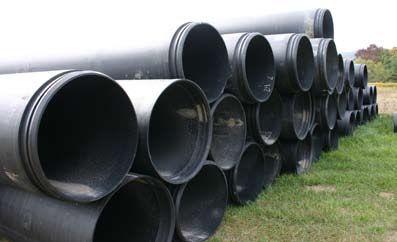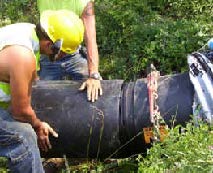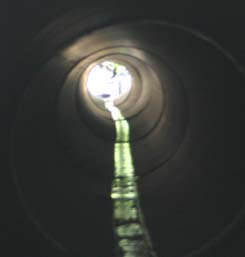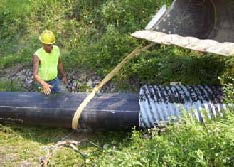Background
The Pennsylvania Department of Transportation (PennDOT) ensures the quality and integrity of transportation construction projects for the entire state. The organization identifies projects on the Statewide Transportation Improvement Plan, along with supporting projects that enhance regional economic development and the safe passage of goods and people in the region. The state planed to rehabilitate a section of Interstate 99 which included the replacement of almost 25,000 feet of deteriorated metal pipes. This led PennDOT to consider the use of high-density polyethylene (HDPE) pipe with the Snap-Tite joining system.
Introduction
When engineers from PennDOT District 9-0 traveled to the project location of Bedford and Blair counties to field view the project; they soon discovered they had a complex situation that would require a unique solution. Most of the corrugated metal pipes had deteriorated and were in need of replacement. Pipe conditions ranged from heavy rust to inverts of pipes completely missing. Some of the pipes were almost 60 feet beneath the roadway surface of Interstate 99. Traditional open cut replacement and pipe jacking were investigated and found to be to cost prohibitive. PennDOT looked into a slip line system by Snap-Tite and the discovery of almost $9 million in savings blew them away.
Snap-Tite officials were required by PennDOT’s Bureau of Design to submit engineering computations that demonstrated that the polyethylene pipe would withstand soil pressure from the deepest depths (60 feet) as a stand-alone pipe. The pipe passed with flying colors demonstrating it would withstand the earth pressures exceeding the 60-foot fill depth. Snap-Tite also demonstrated to the Department the additional environmental benefits, such as not requiring additional unneeded road work, stream diversions, and earth disturbances. This would eliminate queuing of traffic and its release of harmful emissions since the traffic would be maintained using the existing roadway. No special traffic control, such as crossovers or single lanes, would be required in order to install the slip-line. Polyethylene is also fully recyclable and has a virtually unlimited lifeexpectancy.
Culvert Rehabilitation Project Overview
Snap-Tite delivered almost 24,600 linear feet of pipe to the PennDOT contractor along with site evaluations, full technical support and training. The Department also worked with a local readymix company and the admixture supplier to design the grout mix used for the project.
The sections of Snap-Tite were shipped to the jobsite with machined ends already completed. They were then placed horizontally to the roadway at each culvert. Once the host pipe was ready to be lined, a section of Snap-Tite was aligned with the pipe and partially inserted into the pipe. The next section of pipe was then aligned with the pipe, a lubricant was sprayed on the ends of the pipe and a rubber gasket was added. The pipes were then simply snapped together with a come along. The result is a water-tight joint with inside and outside diameters that are the same as those of the pipe. This means there will be no flow restrictions or coupling hang-ups.
The pipe was then pushed or pulled through the deteriorated host pipe. This procedure was repeated until the entire pipe was lined. Bulkheads were then constructed at each end of the pipe. Then a flowable fill grout was then pumped around the HDPE pipe and the host pipe. Enough grout was pumped into the annular space to fill all the voids that had been created by the water escaping from the host pipe. Savings for the project compared to traditional open cut methods amounted to almost $9 million. These savings took into consideration expenses needed for pipe installation, traffic control and user delay costs.
One of the largest savings for the Snap-Tite system comes from the machined ends of the pipe. Traditionally, polyethylene requires a specialized fusion machine with trained fusion operators to heat fuse the pipe together. With the Snap-Tite system, no fusion machine or trained technicians are needed. Poor weather does not pose a problem. This gives a lot more contractors, municipalities, and Departments of Transportation the ability to use the product with out any highly trained personnel or expensive equipment.
“A 30 percent savings on a $6 million project is something that will get you noticed,” said David Hundley of Snap-Tite. “But I think that the environmental benefits of the entire Snap-Tite process are what will make this method of culvert rehabilitation the norm across the country. Issues like sustainability are becoming the focus for state funded infrastructure projects and there’s nothing out there that can compete with the Snap-Tite process. Snap-Tite is truly the permanent solution.”
“With the environmental impact almost nonexistent and the cost savings that we realized by selecting the Snap-Tite pipe over traditional open cut and replacement, the Snap-Tite pipe has become a very valuable tool that we now carry in the tool box.”
SUBSCRIBE TO ISCO UPDATES
ISCO Updates
[gravityform id="21" title="true"]




